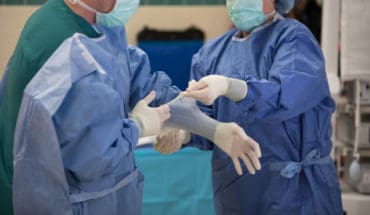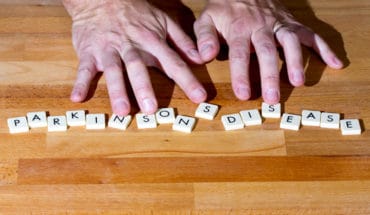A new study has revealed for the first time the vital role carbon dioxide (CO2) plays in determining the lifespan of airborne viruses – namely SARS-CoV-2, the virus that causes COVID-19. It clearly showed keeping CO2 levels in check helps to reduce virus survival, and therefore the risk of infection.
The research, led by the University of Bristol and published in Nature Communications, shows clearly how CO2 is a major factor in prolonging the life of SARS-CoV-2 variants present in tiny droplets circulating in the atmosphere.
Lead author Dr Allen Haddrell, Senior Research Associate in Aerosol Science at the University’s School of Chemistry, said: “We knew SARS-CoV-2, like other viruses, spreads through the air we breathe. But this study represents a huge breakthrough in our understanding of exactly how and why that happens, and crucially, what can be done to stop it.
“It shows that opening a window may be more powerful than originally thought, especially in crowded and poorly ventilated rooms, as fresh air will have a lower concentration of CO2, causing the virus to become inactivated much faster.
“But it also highlights the importance of our global net zero goals because the research indicates even slightly raised levels of CO2, which are increasing in the atmosphere with the onset of climate change, can significantly improve the rate of virus survival and the risk of it spreading.”
During the COVID-19 pandemic carbon dioxide monitors were used to help estimate ventilation in buildings, as both CO2 and the virus are present in exhaled breath. But this research has uncovered how CO2 itself actually makes the virus survive longer in the air. The researchers also found that different SARS-CoV-2 variants had different aerostabilities, with the latest ‘Omicron’ variant having an extended lifespan.
The researchers made these discoveries using unique bioaerosol technology they developed, called CELEBS – Controlled Electrodynamic Levitation and Extraction of Bioaerosols onto a Substrate, which allows the survival of different SARS-CoV-2 variants to be measured in laboratory generated airborne particles that mimic exhaled aerosol.
By varying the concentration of CO2 in the air between 400 parts per million (ppm) – the level in normal outdoor air) and 6,500 ppm, the team confirmed a correlation between increases in CO2 concentrations and the length of time airborne viruses remains infectious in air, compounding the risk of transmission.
Results showed increasing the CO2 concentration to just 800 ppm, a level identified as well ventilated, resulted in an increase in viral aerostability. After 40 minutes, when compared to clean air, around 10 times as much virus remained infectious when the air has a CO2 concentration similar to that of a crowded room (3,000 ppm).
Dr Haddrell said: “This relationship sheds important light on why super spreader events may occur under certain conditions. The high pH of exhaled droplets containing the SARS-CoV-2 virus is likely a major driver of the loss of infectiousness. CO2 behaves as an acid when it interacts with droplets. This causes the pH of the droplets to become less alkaline, resulting in the virus within them being inactivated at a slower rate.
“That’s why opening a window is an effective mitigation strategy because it both physically removes the virus from the room, but also makes the aerosol droplets themselves more toxic to the virus.”
Between now and the end of the century, recent climate science research has projected the concentration of CO2 in the atmosphere is expected to reach more than 700 ppm.
Dr Haddrell added: “These findings therefore have broader implications not only in our understanding of the transmission of respiratory viruses, but how changes in our environment may exacerbate the likelihood of future pandemics. Data from our study suggests that rising levels of CO2 in the atmosphere may coincide with an increase in the transmissibility of other respiratory viruses by extending how long they remain infectious in the air.”
Co-author Professor Jonathan Reid, Director of EPSRC Centre for Doctoral Training in Aerosol Science at the University of Bristol, said: “While there is much we still do not understand, we are now gaining a much more complete picture of the role exhaled respiratory aerosols play in transporting infectious viruses between people and the mechanisms that control their survival.
“These findings can serve as a scientific basis for the design of mitigation strategies that could save lives in any future pandemic.”
The study was funded by the Biotechnology and Biological Sciences Research Council (BBSRC), the UKRI National Institute for Health and Care Research (NIHR) rapid COVID-19 call, the Elizabeth Blackwell Institute (EBI), the University of Bristol, and the Health and Safety Executive PROTECT COVID-19 National Core Study on transmission and environment.
Paper
‘Ambient Carbon Dioxide Concentration Correlates with SARS-CoV-2 Aerostability and Infection Risk’ by Allen Haddrell, Jonathan P. Reid et al. in Nature Communications
- New lipid-based pathway discovered as key to memory formation - 25th June 2025
- Crucial link could explain how Alzheimer’s takes hold - 25th June 2025
- Understanding Your Mind Can Improve Daily Life - 25th June 2025







